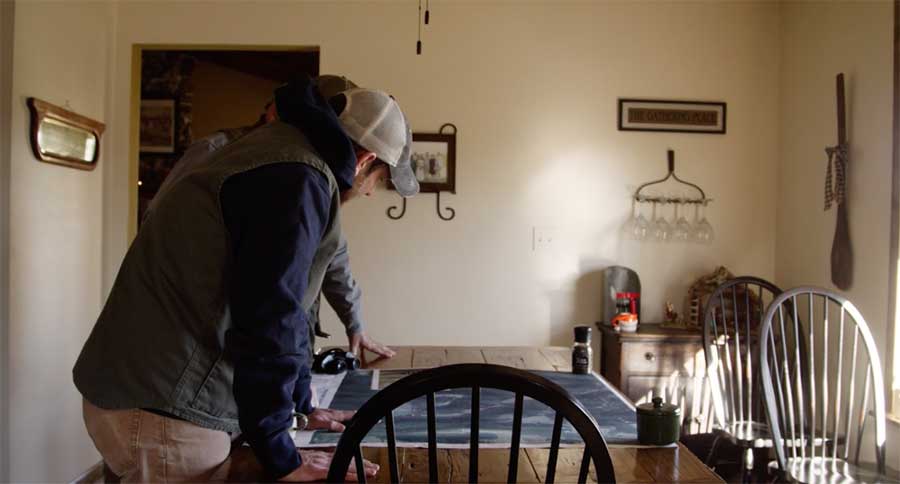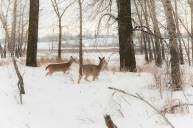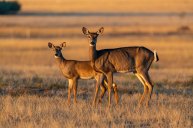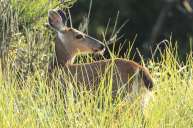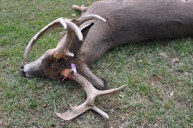We sit down with Co-Owner, Matt Dye, from Land and Legacy for some tips on estimating your deer herd population and buck to doe ratio.
Deer herd management is at an all-time high in the history of deer hunting. Accordingly, Quality deer management programs are in place amongst more hunters today than ever before.
Often, however, there are misconceptions about how to understand a deer herd. Hunters will claim there is "no way" one could possibly know how many deer are on their property. Some consider the deer sex ratio of a herd to be useless information. What many don't understand, or choose not to try, that's their business.
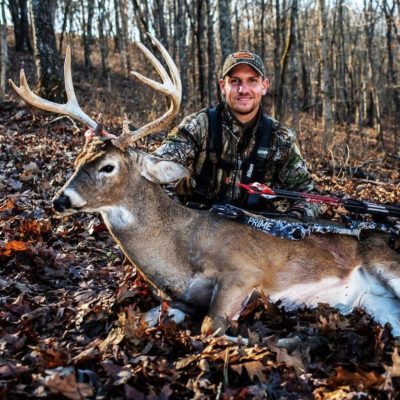
Facebook - Matt Dye
Fortunately for us, there are people, like Matt Dye, who understand the whitetail deer deeply. Matt Dye is co-owner of Land and Legacy, LLC. Land and Legacy will launch this March, and include a weekly podcast and web series available on their website. Matt and his partner Adam Keith are wildlife consultants, assisting landowners in habitat improvement and wildlife management across the country. We will cover Land and Legacy on their launch and look forward to sharing their website and information with you.
Luckily, Matt Dye was available to answer a few questions we had in regards to deer herd population and deer sex ratios.
WIDE OPEN SPACES: What is the best tactic to obtaining information regarding my deer population on my property?
Matt Dye: The best way to accurately estimate the population dynamics of the local deer herd is to complete an annual trail camera survey. Field observations may be done, but just like hunting, movement can be inconsistent. The value of allowing trail cameras to capture your images is they are in place 24/7 and do very little disturbance. August is the best time, in my opinion, to complete a trail camera survey. Bucks are nearly fully developed and can be easily identifiable and distinguished between other bucks. It is critical to able to identify the number of unique bucks. This value will affect the accuracy of the rest of the data obtained in the survey.
How does someone go about completing a trail camera survey?
To complete a trail camera survey begin baiting each site with corn for one week prior to capturing images. Corn is cheap and effective, depending on the size of the survey and deer density, you may be using a lot of it. On average, place one bait site per 100 acres. Baiting the site for one week will condition deer to travel to the site regularly. Ultimately, this allows you to document the most deer which will yield the most accurate results. Here is a tip, place your cameras facing North and be sure to remove all sticks, limbs and grasses within the frame of the image. This will eliminate pictures being blown out by the sun or infrared during the night.
You will need as much detail in the images as possible to distinguish between bucks. Also, set you cameras to take one photo every three minutes. Deer tend to stay around the bait site feeding for extended periods of time, so you will capture them under this format. By setting this delay you will save card space and extend battery life.
When examining the photos be sure to create a folder for each unique buck documented. This is critical as you will need to go back and review other bucks. Save at least four to five images of each buck in a folder. Preferably one image for each angle the buck gives you. This makes telling bucks apart much easier. It also removes the guesswork which remember accuracy is key to the correct information.
After the site is baited for a full week, carry out the survey for 14 days. Be sure to keep bait sites and batteries fresh throughout this time. Missing out on a few days or having a camera malfunction may result in losing all of that data from that site so be thorough.

What are the ideal numbers and how to we increase or decrease them?
Once the numbers have been crunched it's time to understand what they mean. Each property or area, as we know deer do not understand property boundaries, is extremely variable when determining the appropriate deer herd density. I've completed surveys where the density of deer per square mile averaged 30. I've also done other areas where they have been over 160 per square mile. This number is totally dependent upon the amount of quality forage the area offers. The key word was quality. You don't want to see deer browsing in flower beds, etc. If so, it's time to offer more food for the local deer herd.
When it comes to analyzing buck to doe ratios, we have to look at what is natural. The most naturally occurring buck to doe ratio is 1:1. It can seem crazy, but it can be done under proper management. This may mean not punching a buck tag, but controlling the number of antlerless deer for a while. It is very necessary to do so, a skewed ratio with does outnumbering bucks can drastically limit the productivity of the herd.
The rut, which most hunters dream about, may result in a disappointment when too many does are present in the herd. When this is the case, bucks do not have to travel far at all the find the next receptive doe. This means less opportunity to harvest one.
On the flip side, when the adult sex ratio is 1:1 or similar, bucks will be more aggressively searching for a receptive doe. This will drastically increase the intensity of the rut, not leaving hunters disappointed during their time in their stands. In addition, does will get bred and give birth during the correct times of the year. When doe numbers far outweigh bucks, you may see bucks breeding does well into January or even February. As a result this pushes back the birth date of fawns closer to fall, making it more difficult for fawns to survive, specifically in northern climates.
Is there a proper ratio for the amount of doe to fawns and is this something we should pay attention to?
When looking at doe to fawn ratios the average number would be roughly 0.9 to 1.2 fawns per doe. This indicates normal breeding tendencies, low predation rates and the appropriate amount of quality forage and cover present in the landscape. When this number is lower, further analysis is needed to determine the cause. Many common factors that may result in low fawn recruitment rates may be the lack of fawning or escape cover, high predator numbers, or stress in the deer herd as a result of lack of security, lack of food, or even high tick populations.
Is there a way to control these numbers and if so how?
Some of the easiest ways to alter these numbers is by trigger control. Pass on the bucks, let them reach maturity and set your sights on does. There is nothing wrong with letting a buck tag go unfilled for a few seasons when the overall herd's health is increasing. The work will pay off when bucks are able to finally reach their potential. That is when the trigger control comes full circle.
Another way to get skewed ratios back in order is to change the habitat quality. Improve the amount of escape cover, fawning cover and year round food supply. It's important to note that quarter acre food plots typically do not feed deer. When I talk about quality food, I mean increasing the amount of native browse offered in the landscape. Taking these measures will assist you in balancing the skewed ratios.
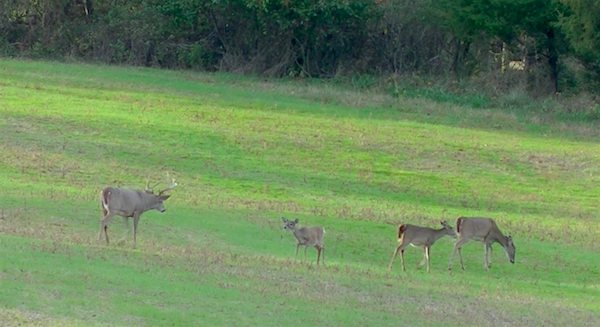
Growing deer has become an entirely different experience than hunting itself. I first became interested in managing properties in 2012 when I really sunk my teeth into Quality Deer Management. Since then I have been able to more understand the whitetail deer and have an entirely new respect for the animal. Hunting them has always been a challenge and fun. I will never stop hunting public land as I thrive off the foot miles and hard work to kill a mediocre buck, however, growing deer and learning them, is an entirely new challenge that takes patience, trial and error and time.
If you are in the market for some extra help and some consultant work to better your property for whitetails, be sure to contact Matt or Adam and visit their Land and Legacy website.
Like what you see here? You can read more articles by Dustin Prievo here. Follow him and his hunting team, Top Pin Outdoors, on Twitter, Facebook and Instagram.
NEXT: HOW TO PLANT A FOOD PLOT NOW TO BENEFIT YOUR FALL HUNTING OUTLOOK
